Low cost winners buyers guide: 10 cars for $20k
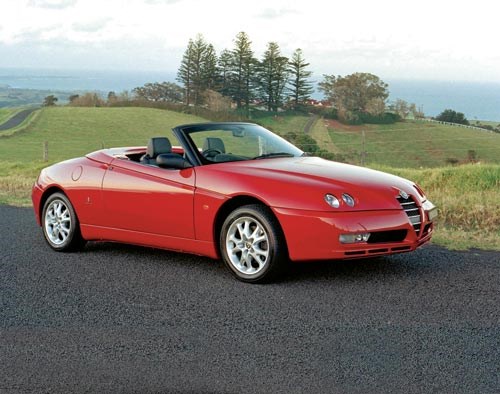 2004 Alfa Romeo Spider
2004 Alfa Romeo Spider

 1975 Ford Escort
1975 Ford Escort
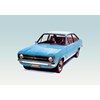
 1997 Lexus GS300
1997 Lexus GS300
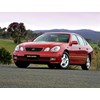
 1976 Triumph 2500 TC
1976 Triumph 2500 TC
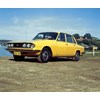
 1996 Volvo 850R
1996 Volvo 850R
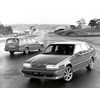
 1972 Cadillac Sedan De Ville
1972 Cadillac Sedan De Ville

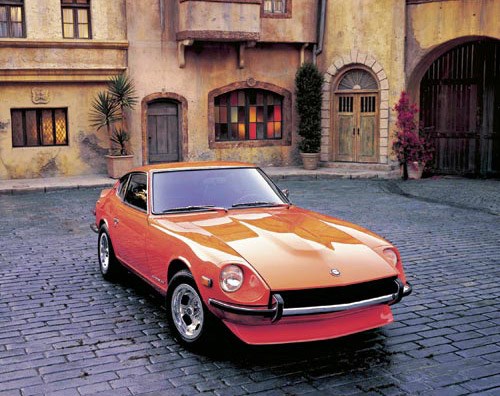 1976 Datsun 260Z
1976 Datsun 260Z

 VL Commodore
VL Commodore

 Mercedes-Benz SLK230
Mercedes-Benz SLK230
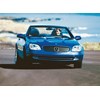
 1966 MG Midget Mk III
1966 MG Midget Mk III


|
|
2004 Alfa Romeo Spider
|

|
|
1975 Ford Escort
|

|
|
1997 Lexus GS300
|

|
|
1976 Triumph 2500 TC
|

|
|
1996 Volvo 850R
|

|
|
1972 Cadillac Sedan De Ville
|

|
|
1976 Datsun 260Z
|

|
|
VL Commodore
|

|
|
Mercedes-Benz SLK230
|

|
|
1966 MG Midget Mk III
|
We look at more low-cost winners: Cliff Chambers finds some classic hardware for less than $20,000...

|
|
Low cost winners: 10 cars for $20k
|
TEN CARS FOR 20 GRAND
Last month we gave you some great ideas for buying classic cars for less than $5000 and now we up the ante with a bunch of thought-provoking candidates priced up to a still very affordable $20,000.
In fact, the first five on our list can be bought for less than $10K – still cheap enough to finance with a swipe of your credit card – and will still provide a warm welcome at car club gatherings on the weekend in addition to being useable daily drivers.
Of course, spend a little more and you’ll get an even better version, still without shattering our $20K ceiling.
High on our list of selection criteria was good spare parts support to ensure your car spends the majority of its time delivering enjoyment rather than making money for your mechanic’s retirement plan.
The upper end of our designated price range offers a generous selection of interesting vehicles. Accordingly, we tried to pick candidates from different parts of the world and automotive eras, yet still came up with a few sporty models.
1. ALFA ROMEO SPIDER TWIN-SPARK
Introduced in the mid-90s when the original low-slung Alfa Spider was finally pensioned-off after three decades, the new-generation Spider with Twin Spark engine cost the better part of $70,000.
But 15 years later, the wasteland that is ‘Alfa Romeo retained values’ is dotted with cars showing 80,000 to 100,000 kilometres and priced as little as 10 per cent of their original cost.
The Spiders that came to Australia after Alfa returned here in 1998 were Series 2 cars with altered engine management and 114kW of power. You could also get a 3.0-litre V6 Spider, but the smaller and lighter engine seems more attuned to the open-top car’s character.
Factory acceleration figures said the 2.0TS would hit 100km/h in 8.4 seconds, but local tests took a tad over nine seconds. Doesn’t matter; the chirping tyres and wailing engine make it seem faster. So, too, does the way the engine surges from 3000rpm to its 7000rpm redline almost more rapidly than the driver can feed it gears.
Handling is way better than you might expect from a reasonably heavy front-wheel-drive car, but keep it away from rough back-roads. The body isn’t especially rigid and torque-steer coming out of bumpy bends will rattle your wrists. ABS brakes are standard, as are dual airbags, excellent air-conditioning and leather seats.
These Alfas do not suffer as badly from rust as earlier ones and the electrics won’t send you insane, either. The roof, providing it is in good condition, seals well and doesn’t flap at high speeds.
Alfas owned and maintained by enthusiasts may cost a little more, but it will be negligible compared to the expense of putting right a mistreated car. Look hard for signs of previous crash repairs and strangely worn tyres.
SPECIFICATIONS
Alfa Romeo Spider Twin-Spark
Number built: 14,080 (1999-2003)
Body: all-steel integrated body/chassis two-door convertible
Engine: 2.0-litre inline four-cylinder with double overhead camshafts and fuel injection
Power: 110kW @ 6000rpm
Torque: 181Nm @ 3800rpm
Performance: 0-100km/h – 9.3sec
0-400 metres: – 17.1sec
Transmission: five-speed manual
Suspension: Front – independent with wishbones, Macpherson struts, coil springs, and anti-roll bar Rear – independent with control arms, coil springs and telescopic shock absorbers
Brakes: disc front/disc rear with ABS
Tyres: 195/50R15 radial
Price range: $5500-$16,000
Contact: Alfa Romeo Owners Club of Australia alfaclub.org.au
************
2.FORD ESCORT Mk 2
During the past 38 years, lots of Aussies have owned Mk 2 Escorts (also known as ‘Brenda’ cars after the development name). My own experience includes a 2.0-litre Ghia and an RS2000 similar to the car that UC family member Dave Morley currently enjoys.
Built locally from 1975 to 1980 and sold here in large numbers, few survive and they are getting expensive. Many were crashed by exuberant owners, but rust is the main issue. Not even the range-topping Ghia was immune; seeing an almost-new Ghia with its vinyl roof removed and lots of unprotected metal exposed makes it clear that these cars will suffer terminal corrosion.
While the slope-nose RS2000 is galloping off towards our $20,000 limit, virtually any 2.0-litre car can be bought for less than $10,000. That includes panel vans, which are more difficult to locate than sedans but perform well due to their lighter weight.
Ford fitted the 1993cc overhead-cam ‘Pinto’ engine in place of the original pushrod 1.6 once emission controls cut its output to a pathetic 46kW. The job had already been accomplished overseas to produce the original RS2000, but Australia was unique in offering all of its Escorts with the 70kW 2.0-litre unit.
Ghia versions, which are scarce, have better seats than the basic GL, a quasi-timber dash and superior sound-deadening. Top speed was 168km/h back in 1978 and a four-speed Ghia would happily cruise at 140km/h. The 55-litre fuel tank that had to be slung under the boot floor would take it 600km between stops.
SPECIFICATIONS
Ford Escort Mk 2
Number built: 35,000 (approx.)
Body: all-steel integrated body/chassis two-or four-door sedan, panel van
Engine: inline 2.0-litre four-cylinder with overhead camshaft and single downdraft carburettor
Power: 70kW @ 5200rpm
Torque: 148Nm @ 3800rpm
Performance: 0-100km/h – 11.5sec
0-400 metres: – 17.9sec (RS2000)
Transmission: four-speed manual, three-speed automatic
Suspension:
Front - independent with Macpherson struts and anti-roll bar
Rear - Live axle with semi-elliptic springs, telescopic shock absorbers and anti-roll bar
Brakes: disc front/drum rear – power assisted
Tyres: 155SR/13 or ZR70S/13 radial
Price range: $1500-$12,000
Contact: rsownersclubaust.com.au
************
3. LEXUS GS300
For almost a decade after Toyota founded its Lexus off-shoot, the cars it offered were beautifully built and deathly dull. But in 1998, seven years after the design made its Japanese debut as a Toyota Aristo, Australia saw its first examples of the GS300 Lexus and was seriously impressed.
The GS300’s shape was curvaceous and classy, with big windows and headlights arranged in a style that echoed contemporary Mercedes-Benz models.
Even if you’ve got less than 10 grand but want a car that is going to stun the family with its decadence, this Lexus isn’t a bad place to start. Almost everything inside is covered in leather or timber and the seats are sumptuous. The air-conditioning should deliver an Arctic blast and if you’re lucky the sunroof (if fitted) will still work.
Aristos had undignified twin-turbo engines, but Lexus used an unboosted 168kW version of Toyota’s J2Z overhead-cam six-cylinder for its ‘Grand Sedan’. Four-speed automatic transmission was mandatory. Standing starts and rapid overtaking aren’t GS300 fortes, but once wound up it will waft down the freeway and surge up moderate hills with little effort.
If you have a younger driver heading off to face the violent world on wheels, the GS300 will make a fine first car. ABS and dual airbags are standard and the car’s structure is immensely strong. Yes, the shape is a bit grandad, but inside is seriously ‘cool’, with moody dash lights illuminating all of that plush stuff.
Most in the $10K price bracket are 2000-2002 models that have yet to register 150,000 on the odo. Ideally, they will have new cam belts, brake rotors and service books that confirm regular attention from doting original owners.
SPECIFICATIONS
LEXUS GS300
Number built: n/a
Body: all-steel integrated body/chassis four-door sedan
Engine: 3.0-litre inline six-cylinder with overhead camshafts and fuel injection
Power: 166kW @ 6000rpm
Torque: 298Nm @ 4000rpm
Performance: 0-100km/h – 8.8sec
0-400 metres: – 16.4sec
Transmission: four-speed automatic
Suspension:
Front – upper and lower wishbones with coil springs, telescopic dampers and anti-roll bar.
Rear – upper and lower locating links with coil springs, telescopic dampers and anti-roll bar
Brakes: discs front and rear with ABS
Tyres: 225/55R16 radial
Price range: $3000-$14,000
Contact: au.lexusownersclub.com
************
4. TRIUMPH 2500TC/2500S
Some readers will be disappointed that this selection doesn’t include a Jaguar, but concerns linger about the Coventry Cat’s durability. Here instead is another quality Brit sedan with twin carburettors, a classy interior and independent rear suspension.
The big difference compared with a Jag is that you can replace a Triumph starter motor in about half an hour and fix a blown head-gasket in your driveway using the tool kit the kids gave you for Christmas.
The first car in Triumph’s independent-rear range was the 2000. It dates from 1963 and, like early PI versions, is now very scarce.
However, thanks to several years of local assembly, Australia is well-supplied with 1970s versions of the 2.5-litre model and survival rates are high.
Double-skinned construction made the Triumph exceptionally strong, but contributed to untenable repair bills once rust did take hold. Look carefully at the wheelarches and the roof for signs of ‘quickie’ repairs.
Cars that survived usually have three-speed automatic transmissions, but it takes a manual – preferably with overdrive – to exploit the character of these ‘sports’ sedans.
Independent rear suspension provides grip on all surfaces and it was only a poor power-to-weight ratio that prevented the Triumph from enjoying greater success in rally events back in the day.
Triumph’s shock and spring rates were biased towards ride smoothness, but a suspension specialist can sort out the body roll and front-end float for not much money at all.
SPECIFICATIONS
Triumph 2500TC/2500S
Number built: 195,311 (Mk 2)
Body: all-steel combined body/chassis four-door sedan and station wagon
Engine: 2.0 and 2.5-litre inline six-cylinder with overhead valves, twin sidedraft carburettors or fuel injection
Power: 98kW @ 5400rpm
Torque: 205Nm @ 2000rpm (2500 PI)
Performance: 0-96km/h – 9.4sec
0-400 metres: – 17.1sec (2500 PI manual)
Suspension:
Front – independent with coil springs, Macpherson struts, lower control arms (anti-roll bar on some)
Rear – independent with trailing arms, coil springs and telescopic shock absorbers
Brakes: disc/drum, power assisted
Tyres: 6.50x13 crossply 165SR13, 175-185SR14 radial
Price range: $1000-$15,000
Contact: Triumph Sports Owners Association in most states. tsoa.asn.au
************
5. VOLVO 850R
The 850R arrived here in 1996 and sold in small quantities to enthusiasts prepared to forget the cardie-on-a-hanger jibes. New sedans cost $78,000 and the station wagon (similar to the T5-R racer) was only $2000 more.
Volvo had been a force in British touring car racing and gained some credibility in Australia when Jim Richards won the rain-soaked two-litre Bathurst against BMWs and all-wheel-drive Audis in 1996.
The 850R’s turbocharged five-cylinder engine funnels 185kW (177kW if it’s an automatic) through the front wheels and you might imagine it would produce untenable levels of torque steer, but not so. Although you’re left in no doubt as to which set of wheels is driving the 850R, throttle control and the limited-slip differential easily hold the car on the threshold of traction loss. The auto even has a ‘winter’ setting that further mutes the onset of wheelspin.
In addition to the turbo engine and suspension tweaked to make a competition car palatable for road use, the Volvo has spoilers front and rear, a CD player, superbly shaped sports seats with power adjustment, and accommodation for seven in the wagon.
Providing you choose a car that has been properly serviced, the 850R is a very involving way to invest $10,000, which will likely buy an automatic wagon that hasn’t yet rolled over 200,000 clicks and should have a couple of years before needing a water pump and timing belt.
SPECIFICATIONS
Volvo 850R
Body: all-steel integrated body/chassis four-door sedan and station wagon
Engine: inline 2.3-litre five-cylinder with overhead camshaft, fuel injection and turbocharger
Power: 185kW @ 5600rpm
Torque: 350Nm @ 2400rpm
Performance: 0-100km/h – 7.9sec
0-400 metres: – 15.8sec
Transmission: five-speed manual, four-speed automatic
Suspension:
Front – independent with Macpherson struts, coil springs and anti-roll bar
Rear – semi-independent with torsion-beam axle, coil springs, trailing arms and telescopic shock absorbers
Brakes: discs front and rear with ABS
Tyres: 205/45ZR17 radial
Price Range: $4500-$12,000
Contact: Volvo Clubs in some states. volvoclub.org.uk/850rep1
************
6. 1970s CADILLAC
Hunting for a big, impressive US-made car below $20,000 is becoming a challenge. People are snapping up Chevs, Pontiacs, Galaxies and even Dodges at unexpected rates, forcing prices to new levels. Less explicable is why opulent big-engined Cadillacs that were once affordable only to the super-wealthy now sell for less than basic General Motors products of similar age.
During the 60s and 70s, certain Holden dealerships in major cities could organise a brand new Caddy to be shipped, converted to right-hand drive and delivered with parts and service warranty for the price of about five Holdens.
The stock engine was a 7.7-litre V8 with mountains of low-down rumbling torque and the ability to haul more than two tonnes with complete disdain.
Cadillacs that came here new tended to be laden with gadgets and used electric motors to move virtually everything in the cabin. Range-topping Fleetwood limos had cloth and/or leather trim and even these in today’s market cost no more than a ‘basic’ Sedan or Coupe de Ville.
With complexity comes problems, though, and any Cadillac must be exhaustively checked. And remember that these high-end models received no more attention to rust-proofing than a basic Chevy, so you’ll still need to check the body carefully.
Finding a good sub-$20,000 Cadillac is surprisingly simple.
Unique Cars and online classified ad sites will normally have several on offer. Most common is the four-door Sedan de Ville, but among the lower-priced cars seen recently were long-wheelbase 1970s Fleetwoods.
SPECIFICATIONS
1970S Cadillac
Number built: 2.9 million (all models 1971-80)
Body: all-steel, separate body/chassis, two- and four-door hardtop, four-door sedan and limousine, two-door convertible
Engine: 7.7 litre V8 with overhead valves and single downdraft carburettor
Power: 164kW @ 4000rpm
Torque: 493Nm @ 2400rpm
Performance: 0-100km/h – 11.8sec 0-400 metres – 17.4sec
Transmission: three-speed automatic
Suspension:
Front – independent with coil springs, wishbones and telescopic shock absorbers
Rear – live axle with coil springs, locating links and telescopic shock absorbers
Brakes: disc/drum (power assisted)
Tyres: LR78 S15 bias ply
Price range: $3000-$22,000
Contact: Cadillac clubs in all states, www.cadillaclasalleclub.com.au
************
7. DATSUN 260Z
When Jaguar released its E-Type in 1961, the world was amazed at the grace and pace packed into an affordable supercar. When Nissan echoed Jaguar’s concept eight years later, its 240Z was only slightly slower, considerably cheaper and
vastly more practical.
Lots of Australians had to think hard whether to choose a Datsun Z over the locally made two-door Monaro and many came down on the side of the six-cylinder import. That choice became even easier in 1974 when the range grew to include a 260Z 2+2 with space in the back for a couple of children or your skis and luggage.
The 2.6-litre 260Z straight six had slightly more power than the original 2.4 version and also had the option of automatic transmission, endearing it to commuters on the hunt for something stylish.
During the five years that the 260Z was sold in Australia, inflation and currency shifts saw prices more than double, the popularity of 2+2 versions soar, and air-conditioning and automatic transmission become common options in a sports car.
Forty years have passed since the earliest 260Zs were new and rust remains a major threat to surviving cars. These are a tricky
design to examine properly and eradicating entrenched rot is time-consuming. Sound 2+2s are still available, though, and are reasonably affordable.
While 260Z two-seaters in the local market are under the influence of soaring world values, the long-wheelbase cars remain typically below $15,000. Five-speed manual versions tend to attract slightly more money than automatics.
SPECIFICATIONS
Datsun 260Z
Number built: 80,369
Body: steel, integrated body/chassis, two-door coupe
Engine: 2.6-litre inline six-cylinder with overhead camshaft and twin sidedraft carburettors
Power: 112kW @ 5400rpm
Torque: 219Nm @ 4400rpm
Performance: 0-100km/h – 8.0sec
0-400 metres: – 16.6sec
Transmission: five-speed manual, three-speed automatic
Suspension:
Front – independent with Macpherson struts, coil springs and anti-roll bar
Rear – independent with trailing arms, transverse link, coil springs and telescopic shock absorbers
Brakes: disc/drum power assisted
Tyres: 175/75x14 radial
Price Range: $4000-$27,000
Contact: Datsun clubs in all states. zcarclub.com.au
************
8. HOLDEN VL CALAIS TURBO
Had circumstances been just a little different, Holden could have ended its association with Australia almost 30 years ago. In the mid-1980s there was no money for new models, not even for an engine that would run on unleaded petrol.
For the first time in its history, Holden’s mainstream model needed to use an engine made by another company and that company turned out to be Nissan. Initially it was just the smooth 3.0-litre 114kW normally aspirated version of the Nissan Skyline straight-six, but within six months a turbo version with 150kW became available in every VL Commodore from a basic SL to the scarce Calais wagon.
Considering Holden at that time was almost begging on street corners to cover its development costs, the nip and tuck job to produce a fresh look for the Calais was admirable. The half-hidden headlights and heavy cross-hatched grille showed a Cadillac influence, but that seemed fine with people who bought Australian-made prestige cars.
Younger owners who now like the look and performance potential of the VL frequently make changes to suit their particular needs and driving styles, and these can adversely affect the value of individual cars, but the major risk when buying a turbo is abuse by previous owners. So evaluation by a specialist in performance engines is essential, even if the car looks to be perfect.
Unprotected VLs are pathetically easy to pinch, so these cars are also popular with thieves. A car without a decent-quality immobiliser (recoded so the previous owner doesn’t have access) is the minimum required.
For long-term ownership with an eye to financial gain, or just eye-catching everyday transport, the closer to factory-stock a Calais remains the better.
SPECIFICATIONS
Holden VL Calais Turbo
Number built: 150,400 (approx. total VL excl. HDT & HSV)
Body: all-steel integrated body/chassis, four-door sedan
Engine: 3.0 litre inline six-cylinder with fuel injection and turbocharger
Power: 150kW @ 5600rpm
Torque: 296Nm @ 3200rpm (5.0-litre High Output V8)
Performance: 0-100km/h – 7.6sec
0-400 metres: – 16.2sec
Transmission: five-speed manual, three-speed automatic
Suspension:
Front – independent with struts, coil springs and anti-roll bar
Rear – live axle with multi-link location, coil springs and telescopic shock absorbers
Brakes: Discs all round with power assistance
Tyres: P205/65HR15
Price range: $5500-$22,500
Contact: Holden clubs in all states. vlturbo.com
************
9. MERCEDES-BENZ SLK230
People considering an affordable sports car may not have Mercedes-Benz on the short list, but please don’t bypass this cute and feisty two-seater with its supercharged engine.
The R170 models arrived here in 1997 and cost almost $100,000. And the waiting list at the time was so long that some people who managed to acquire the hottest property in Benz-land were onselling them at premiums of up to $10,000.
Eventually supply caught up with demand and values of pre-2000 models plunged. These had initially been available only with the five-speed automatic transmission, but when the R171 update arrived in 2000, the SLK could be optioned with a six-speed manual gearbox. Helping justify the little car’s big price tag were air-conditioning, front and side airbags, leather trim and switchable traction control.
Despite a quite innocent appearance, the 230 was a little fire-breather – with or without manual transmission. Local cars were slightly slower than Euro-spec versions, but still managed 7.6 seconds for the 0-100km/h sprint and a neat 20 seconds for 0-160km/h.
Highlighting the SLK’s appeal was a folding hardtop that eliminated issues with conventional material convertible tops such as leaks, misted windows and compromised security. However, if the Benz hardtop fails to behave as expected, repairs are expensive.
Also worth checking is the Electronic Control Unit because a replacement will drain a few thousand dollars from your bank account. Other areas to check include smooth operation of the folding roof and sagging rear suspension.
Automatic 1998-2000 SLKs are the easiest to find and most probably the more enjoyable for everyday running. However, a six-speed with its rifle-bolt shift action will be more fun on back-roads.
SPECIFICATIONS
Mercedes-Benz SLK230
Number built: 2720 (Australian sales only)
Body: all-steel integrated body/chassis two-door coupe/cabriolet
Engine: 2.3-litre overhead camshaft four-cylinder with fuel injection and supercharger
Power: 142kW @ 5300rpm
Torque: 280Nm @ 2500rpm
Performance: 0-100km/h – 7.8sec
0-400 metres: – 15.6sec
Transmission: five-speed automatic
Suspension:
Front – independent with wishbones, struts, coil springs and anti-roll bar
Rear – independent with multi-link location, coil springs and anti-roll bar
Brakes: disc front and rear, power assisted, ABS
Tyres: 205/55R16 (f) 225/50R16 (r) radial
Price range: $8000-$24,000
Contact: Mercedes-Benz Clubs in all states. slkworld.com/australia
************
10. MG MIDGET
We could have chosen the virtually identical Austin-Healey Sprite or the more common MGB in this price range, but the Midget sold here came in two distinct styles and that makes them a more interesting candidate for your $20,000.
When BMC tore up its deal with the Healey family and junked the Sprite, badge-engineering meant that production of the company’s compact sports model didn’t miss a beat. Just as well, too, because Australians loved their Sprites and availability of the near-identical Midget ensured sales continued here from 1968 until 1971, and in other markets until 1979.
Most Midgets currently available in Australia have spent their lives here, but that makes them no less susceptible to the rust and dire structural issues that afflict later ‘rubber-nose’ cars.
All Australian Midgets came with 1275cc engines, but cars sold overseas from 1974 to 1979 shared a 1.5-litre motor with the car’s former arch-rival, Triumph’s Spitfire.
Performance was by no means savage, but a Midget will sit happily at highway speeds and provide fun when you reach the bendy bits.
Later Australian cars, distinguished by a plastic grille in place of the GAN3 model’s chromed one, also missed out on the classic centre-lock wire wheels with ‘eared’ spinners. You need to be careful that the splined hubs used to secure these wheels aren’t so worn that they slip.
Cars in excellent condition and with chrome bumpers and wheels will command close to $20,000, while average-quality restorations stay below $12,000.
SPECIFICATIONS
MG Midget
Body: all-steel, integrated body/chassis, two-door roadster
Engine: 1.1, 1.3 or 1.5 litre inline four-cylinder with overhead valves and dual semi-downdraft carburettors
Power: 48kW @ 6000rpm
Torque: 97.5Nm @ 3000rpm(1968 model 1.3 litre)
Performance: 0-96km/h – 13.2sec
0-400m: – 19.1sec(1968 model 1.3 litre)
Transmission: four-speed manual
Suspension:
Front– independent with upper and lower wishbones, coil springs, lever action shock absorbers and anti-roll bar
Rear – semi-elliptic springs with lever action shock absorbers
Brakes: disc front/drum rear
Tyres: 145SR13 radial
Price range: $4000-$20,000
Contact: MG Car Clubs in all states. mgcc.com.au
Unique Cars magazine Value Guides
Sell your car for free right here
Get your monthly fix of news, reviews and stories on the greatest cars and minds in the automotive world.
Subscribe

.jpg)








